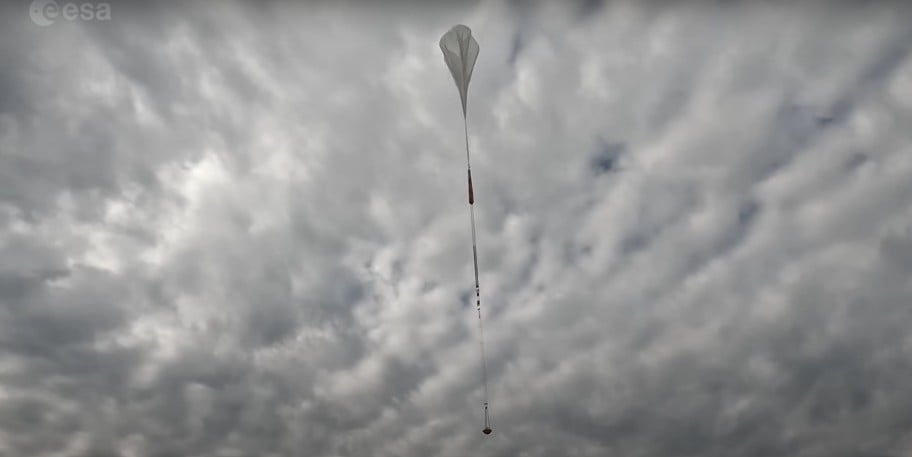The European Space Agency (ESA) has successfully tested the parachute system for its upcoming ExoMars mission by conducting a high-altitude drop from the stratosphere. This innovative test involved a large balloon, approximately the size of a football field, which carried the parachute and its associated test rig into the atmosphere. The drop took place in an isolated area of northern Sweden, simulating conditions the spacecraft will encounter during its descent to Mars.
The ExoMars mission is designed with a multi-stage descent system. Initially, the spacecraft will utilize aerobraking to slow down as it enters Mars’ atmosphere. Following this, it will deploy a parachute to further reduce its speed before employing retrorockets for a soft landing on the Martian surface. Each component of this descent process requires extensive testing to ensure reliability and safety.
In this recent test, ESA engineers attached the parachute and heat shield mock-up to a stratospheric balloon. After reaching the desired altitude, the test rig was released, allowing the parachute to deploy in a low-pressure environment that closely resembles Mars’ thin atmosphere. This drop aimed to evaluate the parachute’s performance under conditions expected during the actual mission.
Onboard sensors collected critical data throughout the descent, including orientation, rotation, speed, and visual footage. The parachute had been in storage for several years, making this test crucial to ensure its functionality and integrity. Engineers wanted to verify that the parachute had not degraded while stored in a controlled environment.
While there have been no official statements released regarding the test’s success, preliminary observations indicated that the parachute deployed correctly and remained intact. The test vehicle did not crash, a promising sign that would align with the expectations of many aspiring engineers who often conduct similar experiments in academic settings.
The ExoMars mission is slated for launch in October 2028, coinciding with one of the bi-yearly windows for missions to Mars. Engineers now have approximately three years to finalize the development and testing of other mission components. Despite various geopolitical challenges surrounding the project, progress continues, marking a significant achievement for the ESA.
With this parachute test completed, the team is looking forward to more ambitious experiments. Upcoming tests may include subjecting the heat shield to extreme conditions and simulating the spacecraft’s rocket firings for landing. For engineers involved in the ExoMars project, these testing phases represent a compelling and dynamic part of the overall mission planning process, showcasing the excitement of engineering in space exploration.
This development reinforces the commitment of the European Space Agency to advance its exploration objectives and keep its Mars endeavors on track. As the team prepares for future tests, the potential for scientific discoveries on the Red Planet remains a tantalizing prospect.
